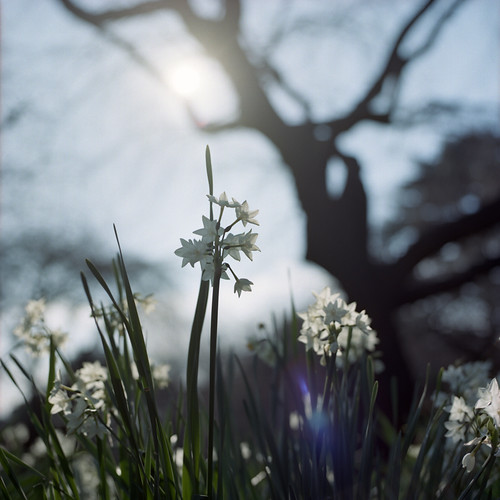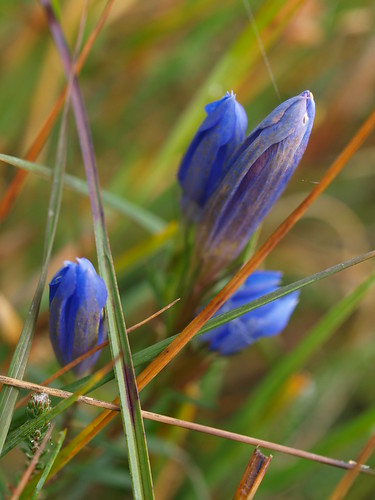Eau de Narcisse Bleue
Eau de narcisse bleue is unexpectedly part of Hermes' cologne collection; a fragrance family characterized by effervescent citrus, pungent herbs and overall cheerfulness. Eau de narcisse bleue, like its former abstract floral cologne eau de gentiane blanche, is melancholy and more than sunny Mediterranean patios and azure sea and skies, it brings to mind a walk in a Northern garden early in early autumn morning after it rained. There is still a fair amount of vegetation from the sunny summer left - cyclamens, irises and many leafy greens. The air is filled with a crisp watery freshness of green grass and violet leaves crushed underneath one's foot. It's so vegetale that it's reminiscent of a very green gazpacho and juiced greens and wheat-grass.
The opening notes are those of vulnerable orange blossoms drenched in iced green tea (which undoubtedly would be what rain is made from in the Ellena's world). Their scent is sweet and cheerful, but is diminished by the celestial rinse. Echoed from the distance are narcissus flowers peeking through the green shrubs and represented by the sweet scent of hay more than anything else. You'll find non of the animalic, paracresyl methyl ether characteristics of the flower that give it the unbearble leathery corpse personality. Just a whiff of the narcissus' green top notes, resembling lily of the valley in their ethereal greenness.
Then comes iris, and the playful orange blossom all but disappears. Cool and powdery yet also sweet and plasticy, the iris brings to mind Hiris, which may as well be the blueprint for both Narcisse Bleue and Gentiane Blanche. At the present makeup of this collection, it is a bit astonishing that Hiris wasn't drafted to serve as a cologne as well.
The dry down is a bit disappointing though: it reverts to a non-descript musky coumarin whisper. Vague, sweet and disappointing at the end of an interesting exercise in restrained story-telling and subtle olfactory imaging.
Top note: Tea, Orange Blossom
Heart notes: Iris, Violet Leaf, Narcissus, Hay
Base notes: Tonka Bean, Musk





![Bitter [sweet] by Ravi Vora](http://farm2.staticflickr.com/1277/1315397905_41ed5908d3.jpg)

